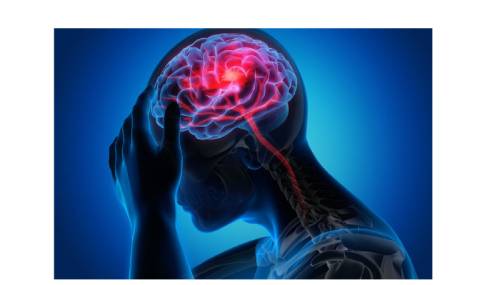
Science
Brain Injury Awareness: Understanding Immediate and Long-Term Neurological Effects
3 min. read
March is Brain Injury Awareness Month, a time to spotlight the immediate and long-term neurological effects of traumatic brain injury, or TBI, suffered by an estimated 1.5 million Americans every year. A TBI can be caused by a forceful bump, blow, or jolt to the head or body, or from an object that pierces the skull and enters the brain, explains the National Institutes of Health (NIH).
“Some types of TBI can cause temporary or short-term problems with normal brain function, including problems with how the person thinks, understands, moves, communicates, and acts,” states the National Institute of Neurological Disorders and Stroke, part of the NIH. “More serious TBI can lead to severe and permanent disability, and even death.”
With some injuries, the damage is immediate. Other outcomes of TBI can be secondary, meaning they can occur gradually over the course of days or appear weeks later.
Raphael Wald, Psy.D., a neuropsychologist with Marcus Neuroscience Institute at Boca Raton Regional Hospital, part of Baptist Health, explains what neurological conditions can develop from a brain injury.

Raphael Wald, Psy.D., a neuropsychologist with Marcus Neuroscience Institute at Boca Raton Regional Hospital.
“A brain injury can lead to numerous problems including aphasia (speech problems), amnesia (memory problems), gait disorder (problems walking), changes in personality and many others,” explains Dr. Wald. “It is common for people with acquired brain injury to experience increased fatigue (mental and physical) and some slowing down in how fast they can process information, plan and solve problems.”
Brain injuries are common among the more frail in the elderly population, but they can happen to anyone experiencing auto or biking accidents. They can also commonly occur during Intense sporting activities.
“The brain injuries that I see are from falls in elderly people, contact sports like football and boxing, bicycle accident, car accidents, and others,” said Dr. Wald.
The more severe the brain injury, the more likely that more serious, longer-term neurological effects will result over time. A so-called penetrating TBI happens when an object pierces the skull and enters the brain tissue. Penetrating TBI typically damages only part of the brain. A non-penetrating TBI, or blunt TBI, is caused by an external force strong enough to move the brain within the skull. Causes of blunt TBI include falls, motor vehicle crashes, sports injuries, blast injury, or being struck by an object.
Movement disorders after a TBI, including tremors, are rare after a blunt TBI. “Symptoms such as those that are seen in movement disorders like Parkinson's disease are much less frequent with more common head injuries,” explains Dr. Wald. “They typically only happen with severe head injuries.”
Similarly, brain aneurysms – when a weak or thin spot on an artery in the brain balloons or bulges out and fills with blood -- are not likely to develop after a severe head injury.
“Traumatic brain aneurysms (aneurysms from a head injury) are rare and generally occur after severe or penetrating head injuries,” said Dr. Wald.
According to the NIH, seek immediate medical attention if you experience any of the following physical, cognitive/behavioral, or sensory symptoms, especially within the first 24 hours after a TBI:
Physical: Headache; convulsions or seizures; blurred or double vision; unequal eye pupil size or dilation; clear fluids draining from the nose or ears; nausea and vomiting; new neurologic deficit, such as slurred speech; weakness of arms, legs, or face; loss of balance.
Cognitive/behavioral: Loss of or change in consciousness anywhere from a few seconds to a few hours; decreased level of consciousness (e.g., hard to awaken); mild to profound confusion or disorientation; problems remembering, concentrating, or making decisions; changes in sleep patterns (e.g., sleeping more, difficulty falling or staying asleep); inability to waken from sleep; frustration, irritability.
“Needless to say, everyone who suffers a brain injury should seek medical attention,” adds Dr. Wald. “And always make sure to take safety precautions during any of these activities that commonly cause brain injuries.”
Healthcare that Cares
Related Stories
View All Articles
E-Bike, E-Scooter Head Injuries Surge as Their Popularity Spurs More Hazards
March 7, 2024
2 min. read

Roundup: ‘Brain Atlas’ Paves Way for Treatment Advances; Deaths from Non-Melanoma Skin Cancers Rising Globally; and More News
October 20, 2023
5 min. read

Roundup: Traumatic Brain Injuries in Kids; E-Cig Chemicals Update; and Binge Drinking Among Older Adults
August 2, 2019
3 min. read